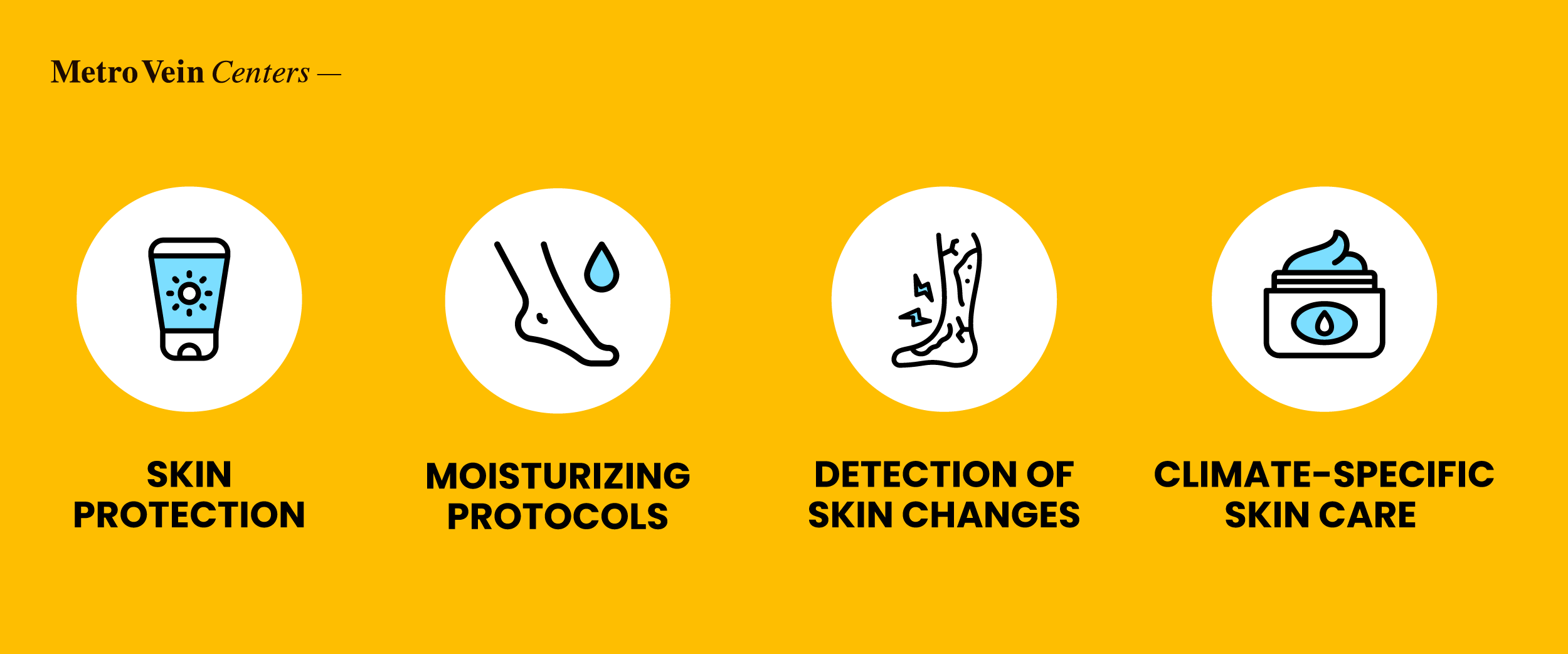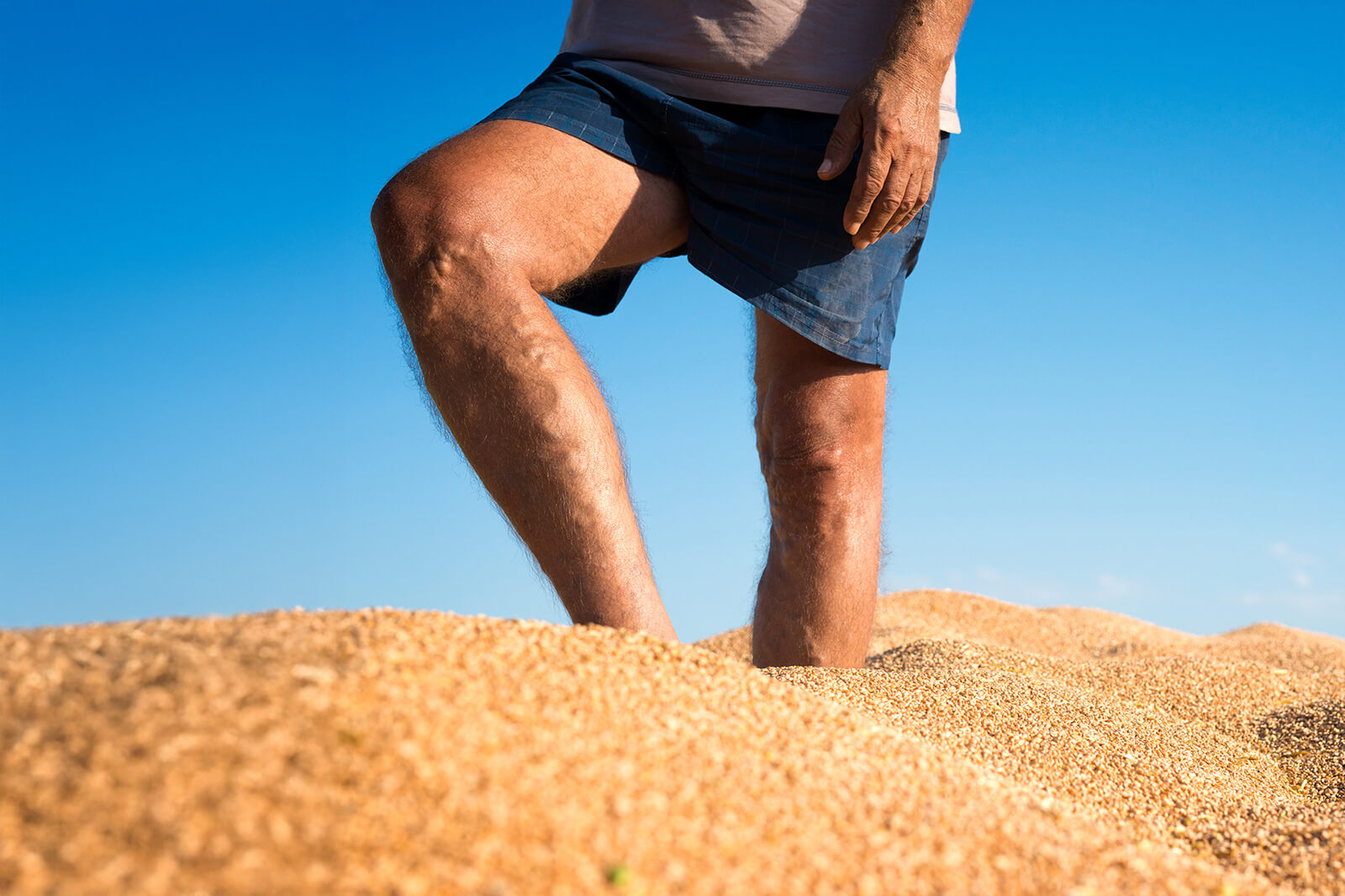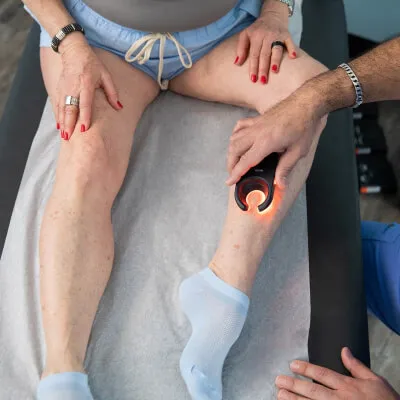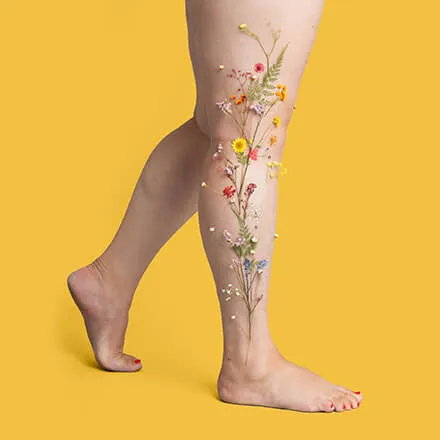Maintaining healthy veins presents unique challenges in the hot environments of the American Southwest. The intense, dry heat can impact circulation and exacerbate existing vein conditions. This article will explore the specific vascular concerns correlated to the desert climate and provide specialized strategies to help you protect your vein health.
The Science of Dry Heat and Vein Function
Most of us are familiar with how hot weather can affect our energy levels and moods, but did you know that temperature fluctuations and sustained dry heat can have an effect on how our veins function?
- Temperature Fluctuations: Rapid shifts between hot outdoors and cool indoors can cause repeated vein dilation and constriction, potentially weakening vein walls over time.
- Sustained Dry Heat: Prolonged exposure to dry heat can lead to peripheral vasodilation (widening of blood vessels in the extremities) as the body tries to cool itself, increasing venous pressure.
- Dehydration: Low humidity accelerates fluid loss through sweat, increasing blood viscosity (thickness) and making it harder for the heart to pump efficiently, impacting circulation.

Common Vein Conditions in Desert Climates
The desert environment can contribute to or worsen several vein conditions:
- Dehydration-Induced Venous Insufficiency: Reduced blood volume from dehydration can impair venous return, leading to symptoms of venous insufficiency.
- Heat-Related Venous Dilation: Prolonged heat exposure can cause veins to expand, as the body tries to cool itself down, putting extra pressure on your veins.
- Spider and Varicose Veins: The combination of heat, dehydration, and increased venous pressure can accelerate the formation of these visible vein issues.
- Venous Thrombosis Risk Factors: Dehydration and prolonged immobility in air-conditioned environments can increase the risk of blood clots, specifically deep vein thrombosis (DVT).
Regional Spotlight: Arizona's Unique Vein Health Challenges
Arizona's intense summer heat poses specific circulatory challenges. Common vein issues in the Arizona heat include varicose veins, spider veins, and deep vein thrombosis (DVT). Some of the factors that lead to vein disease in Arizona include:
- Extreme Temperatures: Prolonged exposure to triple-digit temperatures puts additional stress on the circulatory system.
- Altitude Variations: Higher elevations can lead to lower oxygen levels, potentially affecting circulation in conjunction with heat stress.
Regional Spotlight: Texas Vein Health Considerations
Vein health concerns differ across Texas' diverse climate zones. Common vein issues in Texas include varicose veins, spider veins, and chronic venous insufficiency (CVI).
- Gulf Humidity vs. West Texas Dry Heat: High humidity can impair sweat evaporation, further stressing circulation, while dry heat leads to rapid dehydration.
- Year-Round Adaptations: Texans need to adjust their vein care strategies based on seasonal temperature and humidity shifts, especially Texas summers.

Hydration Strategies in Hot Climates
Proper hydration is central to maintaining healthy veins in dry heat.
- Calculating Optimal Fluid Intake: Increase water intake beyond typical recommendations, especially during periods of high heat or activity.
- Electrolyte Considerations: Replenish electrolytes lost through sweat with sports drinks or electrolyte supplements.
- Monitoring Hydration Levels: Pay attention to signs like thirst, urine color, and leg swelling as indicators of hydration levels.
- Hydration Timing: Drink fluids consistently throughout the day, not just when thirsty.
Exercise Approaches for Healthy Veins in Dry Heat
One of the best ways to support vein health in dry heat is with regular activity. Low impact exercise indoors or in the morning and evening, helps maintain proper circulation. Here are some tips for staying active in dry heat areas:
- Exercise during cooler morning or evening hours to avoid peak heat.
- Choose low-Impact options like swimming, cycling indoors, and walking in shaded areas.
- Utilize air-conditioned gyms or home workout routines during heat advisories.
Clothing and Compression Therapy in Dry Heat
Other tools to maintain healthy circulation and prevent vein-related issues are choosing the right attire and compression wear. Remember to:
- Select Breathable Compression Garments: Opt for lightweight, moisture-wicking materials for compression stockings.
- Consider the Right Materials: Cotton blends or technical fabrics can enhance comfort and compliance.
- Set Compression Schedules: Adjust wearing times based on temperature; consider shorter durations during extreme heat.
- Dress in Light Layers: Wear loose, light-colored clothing to promote airflow and minimize heat absorption.
Skin Care for Vein Health in Desert Environments
Protecting your skin is another component of vein care and disease prevention. Things to keep in mind if you live in a dry, hot climate include:
- Protecting Vein-Affected Skin from Sun Damage: Use broad-spectrum sunscreen with a high SPF to prevent sun-related skin damage that can exacerbate vein issues.
- Moisturizing Protocols: Combat dry air by regularly moisturizing legs to maintain skin integrity and support circulation.
- Detection of Skin Changes: Be vigilant for any new skin discoloration, skin dryness, or irritation that could indicate underlying vein problems.
- Climate-Specific Skin Care Ingredients: Look for moisturizers with ingredients like aloe vera or hyaluronic acid to combat dryness.

When to Seek Medical Care
An important component of managing your vein health when you live and work in a dry heat climate is recognizing when something is wrong. Do not hesitate to seek medical attention when you are experiencing any of the following health concerns:
- Increased leg swelling, pain, or skin changes that worsen in hot weather.
- Signs of dehydration include headache, fatigue, and decreased urine output.
- Signs of heat stroke include hot, dry skin, and rapid pulse and breathing.
- Seek immediate medical care for sudden, severe leg pain, warmth, redness, or signs of a blood clot (chest pain or shortness of breath).
Vein Treatments in Dry, Hot Climates
Consider scheduling vein procedures during cooler months for an easier recovery. In addition to vein treatments, your vein doctors will recommend that you incorporate some lifestyle modifications to aid in your healing process. These include:
- Staying cool and hydrated
- Avoid standing or sitting still for long periods
- Wearing compression stockings
- Exercising indoors and during cooler times of the day
- Elevate your legs
Conclusion
Living in the dry hot climate of the Southwest requires an awareness of common vein health issues and implementing few easy lifestyle modifications. Understanding the unique challenges of living in this climate and following vein health strategies like proper hydration, appropriate exercise, smart clothing choices, and diligent skin care, you can build sustainable habits for long-term vascular wellness and enjoy an active, comfortable life.
Frequently Asked Questions
How does the combination of dry heat and high elevation in Northern Arizona affect treatment options for chronic venous insufficiency?
The reduced humidity can exacerbate dehydration, impacting blood flow. Treatment plans may emphasize aggressive hydration alongside compression and minimally invasive procedures, with careful monitoring for altitude-related circulatory changes.
What modifications to compression therapy are necessary when temperatures regularly exceed 110°F in Phoenix summers?
Lighter compression levels, breathable materials, and shorter wearing durations may be necessary to ensure comfort and compliance while still providing support. Consider wearing them during cooler indoor periods.
Does the transition between air-conditioned environments and outdoor desert heat create specific risks for people with varicose veins?
The rapid changes in temperature can cause vein dilation and constriction, potentially exacerbating symptoms and increasing discomfort. Gradual transitions and consistent compression wear can help manage these risks.
How should hydration strategies for vein health differ between West Texas dry heat and East Texas humidity?
In West Texas, focus on high fluid intake and electrolyte balance and replacement due to rapid evaporation. In East Texas humidity, while sweat evaporation is less efficient, maintaining consistent hydration is still crucial to combat the overall stress on the circulatory system.
What are the most effective cooling techniques to prevent heat-induced vein dilation for outdoor workers in Southwestern desert conditions?
Utilizing evaporative cooling vests, wearing wide-brimmed hats and light-colored clothing, taking frequent breaks in shaded or air-conditioned areas, and consistent hydration with electrolyte-rich fluids can all help you stay cooler and more comfortable while working outside.

Dr. Philip LoPresti
Meet Dr. Philip LoPresti DO, DABVLM, FACS, a board-certified vein specialist and surgeon with over 20 years of experience. Schedule an appointment with him in Queens, NY today.
Meet Dr. Philip LoPresti
Trusted insight from the nationally accredited, board-certified vein doctors at Metro Vein Centers.






